Tomb 11
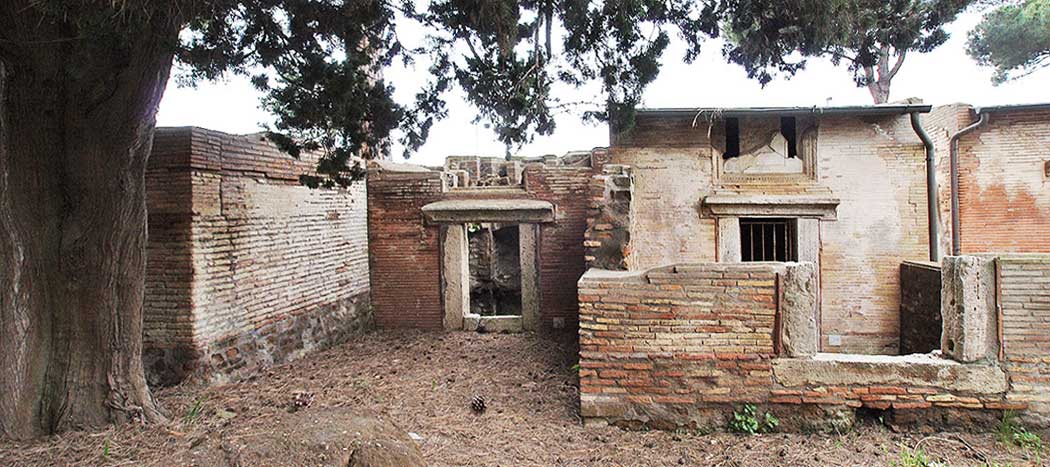
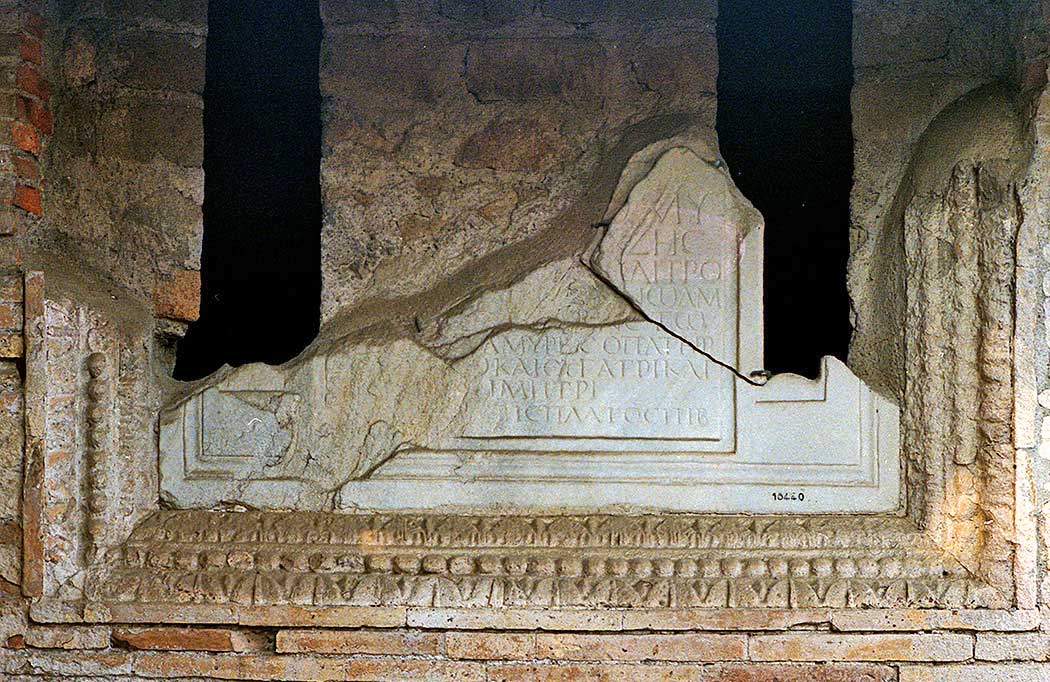
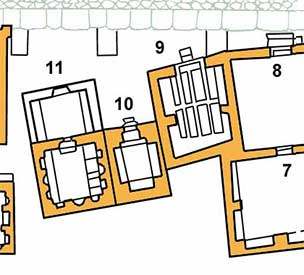 Originally tomb 11 was built on the same line as tomb 10 and had its entrance towards the street. Later an enclosure was built.
Originally tomb 11 was built on the same line as tomb 10 and had its entrance towards the street. Later an enclosure was built.
The floor of the tomb lies beneath street level. The tomb was used for inhumation as well as for cremation.
Above the entrance is a Greek inscription, which is badly damaged on the left side. The inscription is engraved on a marble slab, which has also two small slits.
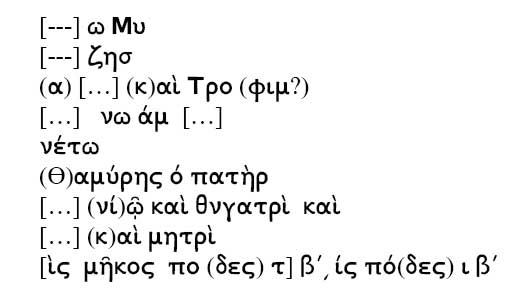
In spite of the damage we can read something about a father, a mother and a daughter. The measurements of the area are mentioned too and they correspond with the actual measurements of the burial chamber.
The marble threshold of the entrance dates from a later time and is much higher than the original tomb level.
Against the back wall of this tomb a sarcophagus has been found. The two niches in the left and the right wall were rebuilt into a kind of sarcophagus closed with a marble slab on the front side. The one on the right side had the following inscription:
D(is) M(anibus)
TERENTIVS LVCIFER
ET TERENTEAE KALLOTY
CENI ET FILIS SVIS FE
CIT SI QIT IN AEO SAR
COFAGO INFERET
CORPVS SIBE OSSA
INFERET AERARIO
SATVRNI S(estertium) XXX M(ilia) N(ummum)
The inscription tells us that the sarcophagus was placed by Terentius Lucifer and was meant for his wife Kallotyche and their children. It also says that it was forbidden by law to bring in a strange body or bones on penalty of paying 30.000 sesterces to the community.
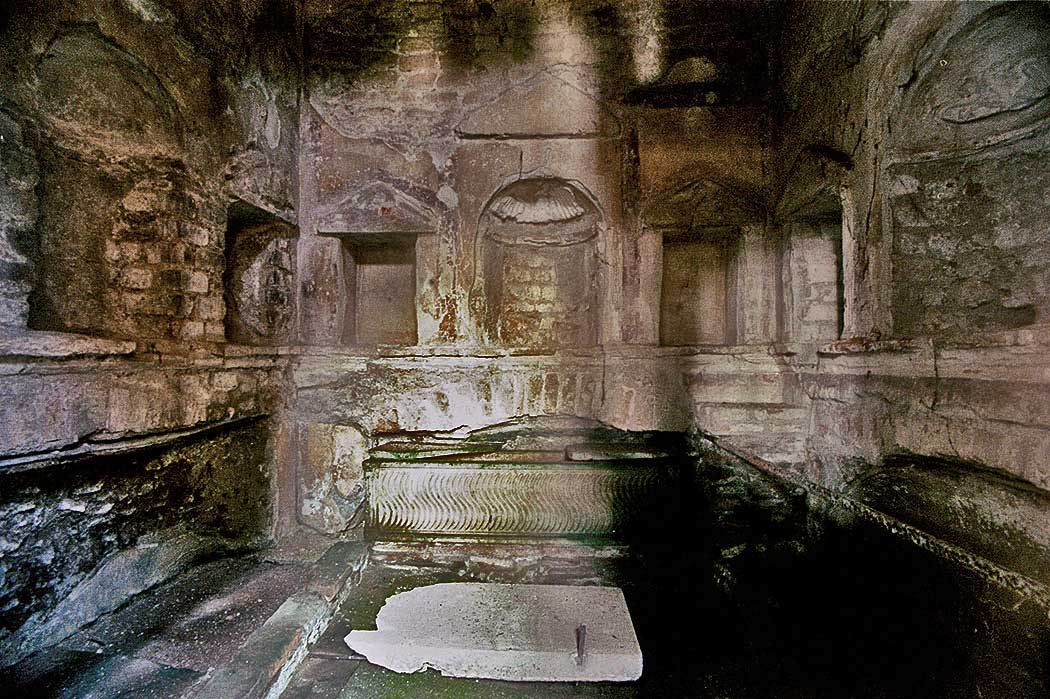
The same Terentius Lucifer can probably be identified in two other inscriptions in the necropolis, which bear his name. In one of them he is the benefactor of an empty coffin and two sarcophagi to L. Tonneius Celestinus, husband of Pontia Dativa. In the other inscription he donates, together with his fellow freedmen and their heirs, (a grave?) to C. Terentius Felix and his wife Ulpia Chrysopolis. The last inscription probably belonged to tomb 11 as well.
The left sarcophagus was decorated with a funeral scene. On both the left and right side of the scene we see a winged guardian spirit with a torch upside down. In the middle of the scene we find the deceased lying on a couch holding a cup in his left hand and a garland of flowers in his right. Behind the man lies a woman, sleeping on her stomach. In front of him, sitting on the edge of the couch, is a second woman, who offers him a drinking bowl. Behind that woman is a little cupid. Beneath the couch, next to a table with bread and fried chicken, sits a dog. On the main side (the right) of the couch stands an almost completely naked Mercury. In his right hand, stretched out to the deceased, he has a purse. On the other side of the couch stands a winged female with a bundle of ears in her right hand and a grain measure in the left, perhaps Ceres.
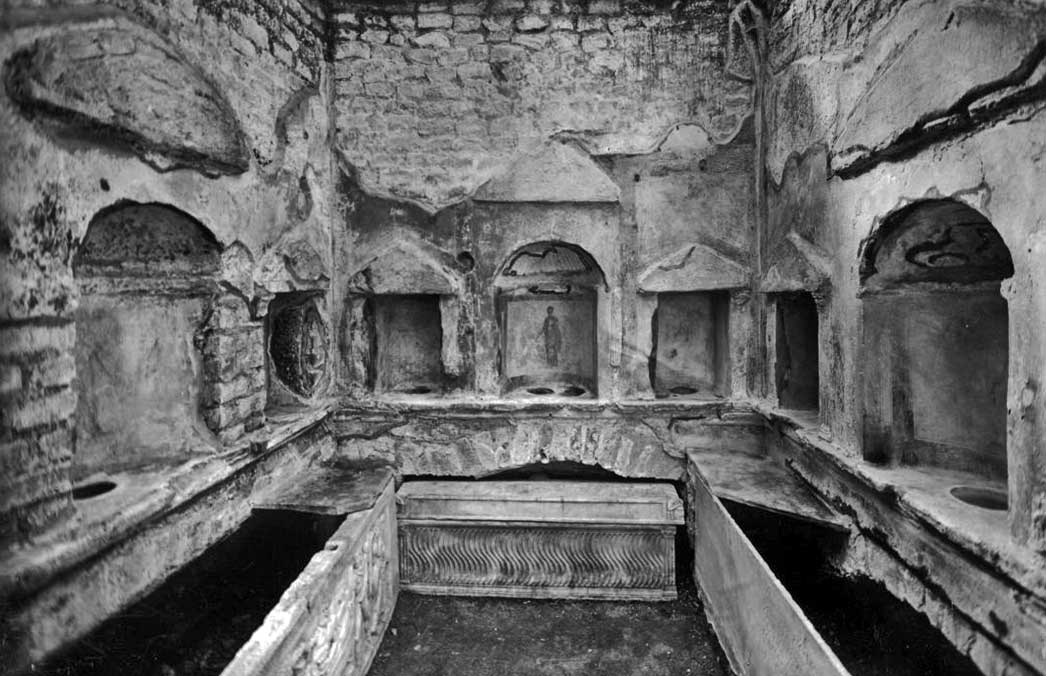
In the centre of the back and side walls are semicircular niches for urns, flanked by smaller rectangular niches. The central niches had a yellow background framed by a blue band. In each niche was a depiction of one of the three Parcae, the Fates (now to the museum). In the backwall we see Lachesis, wearing a red mantle and holding scales in her right hand. On the right wall Atropos, wearing a blue mantle, holding an unrolled scroll with both hands. Clotho was depicted in a blue dress on the left wall. She held a distaff and spindle. On either side of these niches are rectangular niches, flanked by fluted columns, with floral motifs.
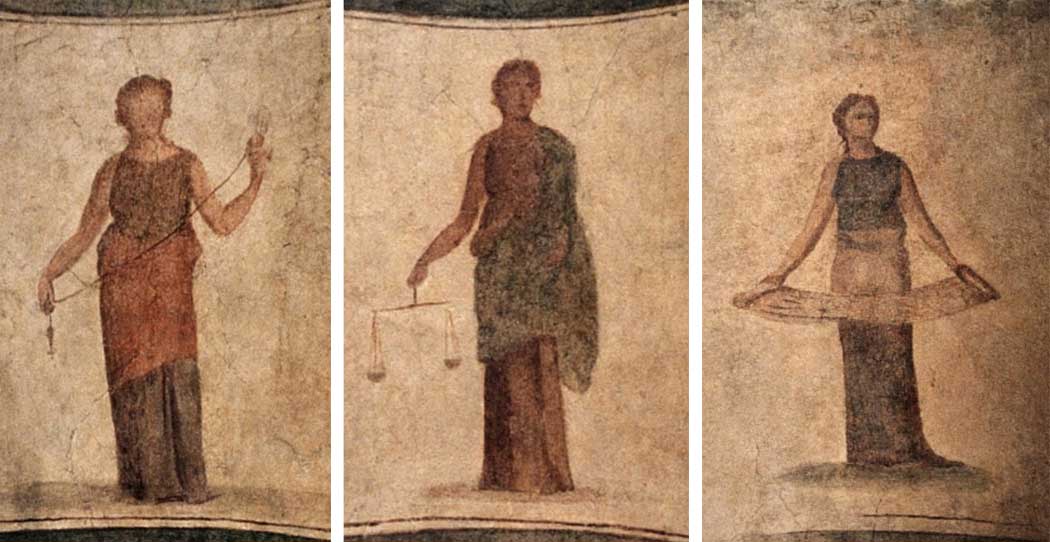
Tomb 11: the three fates after restoration. From left to right: Clotho, Lachesis and Atropos.
- Sources
- Russel Meigs - Roman Ostia, At the Clarendon Press 1973
- Guido Calza - Necropoli nell'Isola Sacra'(1940)
- Dr. Jan Theo Bakker.
- Hilding Thylander - Inscriptions du port d'Ostie (Lund C W K Gleerup 1952).
- Ida Baldassare, Irene Bragantini, Chiara Morselli and Franc Taglietti - Necropoli di Porto, Isola Sacra (Roma 1996).
Waardeert u ons werk?
Wordt lid van Roman Ports en ontvang het boek of doe een donatie!
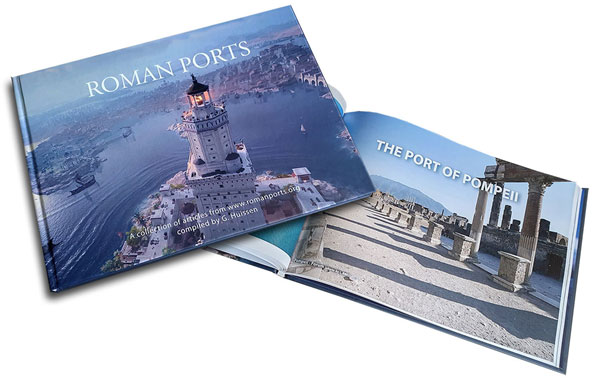 Wordt lid en steun ons
Wordt lid en steun ons
Isola Sacra Index (N)

Speciale sectie over de Romeinse begraafplaats van Portus (Engels)....
Lees meer...De teruggevonden vloot van Pisa

In 1998 werd bij toeval een ongelooflijk archeologisch erfgoed ontdekt in de buurt van het station Pisa San Rossore....
Lees meer...Leptiminus
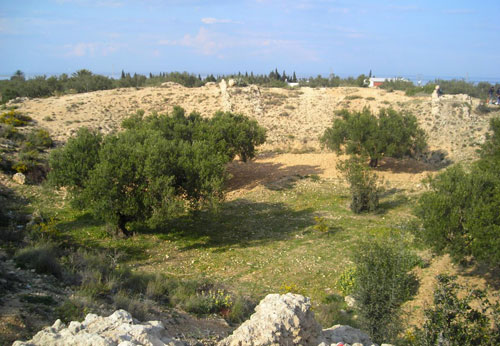
Op de plaats van het huidige Lamta aan de oostkust van Tunesië lag al in de oudheid een havenstad met de naam Leptis Minor ....
Lees meer...Romeins Zeehandelsrecht

Het Romeinse recht is het fraaiste monument dat Rome aan West-Europa heeft nagelaten....
Lees meer...Sullecthum (Salakta)

In de Sahel, in de Tunesische provincie Madhia vinden we aan zee het kleine stadje Salakta....
Lees meer...
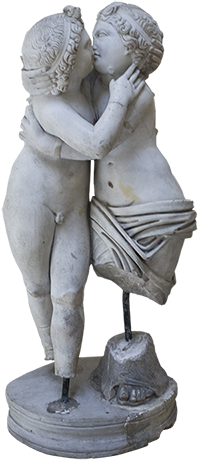 We are committed to providing versions of our articles and interviews in several languages, but our first language is English.
We are committed to providing versions of our articles and interviews in several languages, but our first language is English.